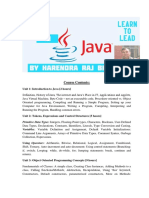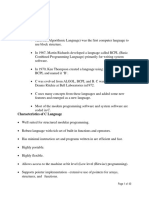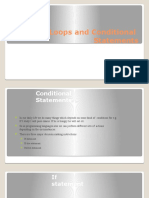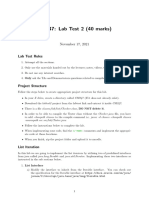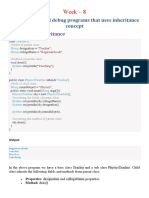0% found this document useful (0 votes)
29 views6 pagesJava Interview Theory Full
The document provides a comprehensive guide to Java programming, covering its introduction, key principles, and various editions. It details essential concepts such as JVM, JRE, JDK, syntax basics, OOP principles, collections, exception handling, multithreading, memory management, and Java 8+ features. Additionally, it discusses design patterns and common programming tasks to aid in interview preparation.
Uploaded by
likithreddy7981Copyright
© © All Rights Reserved
We take content rights seriously. If you suspect this is your content, claim it here.
Available Formats
Download as DOCX, PDF, TXT or read online on Scribd
0% found this document useful (0 votes)
29 views6 pagesJava Interview Theory Full
The document provides a comprehensive guide to Java programming, covering its introduction, key principles, and various editions. It details essential concepts such as JVM, JRE, JDK, syntax basics, OOP principles, collections, exception handling, multithreading, memory management, and Java 8+ features. Additionally, it discusses design patterns and common programming tasks to aid in interview preparation.
Uploaded by
likithreddy7981Copyright
© © All Rights Reserved
We take content rights seriously. If you suspect this is your content, claim it here.
Available Formats
Download as DOCX, PDF, TXT or read online on Scribd
/ 6



















